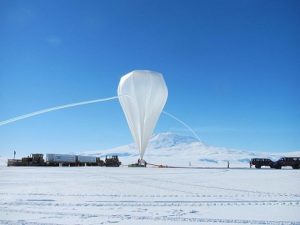
NASA’s super pressure balloon launch is getting delayed due to the build-up of a low pressure system over different regions in New Zealand. According to experts, these areas of low pressure are also associated with unfavorable winds and precipitation.
Chris Schwantes, NASA’s on-site meteorologist for the 2017 Wanaka Super Pressure Balloon Campaign, says conditions are not favorable for the launch. Meteorological department says the region will experience rain and speedy winds over the next couple of days and there is also uncertainty with Tropical Cyclone Cook, and therefore the balloon launch is expected to be delayed for the next four to five days.
Chris also reveals that forecast models are showing high pressure building up in the area after the Easter weekend that could create favorable conditions for launching.
So far, three launch attempts for NASA’s super pressure balloon have failed after the agency announced flight readiness on March 25. The first attempt was done on April 8, second on April 9 and the third one on April 10. However, all the attempts failed due to uncertainty over balloon trajectory. On April 9, the team also experienced some mechanical issues with the launch vehicle crane.
UPDATE : 8 April 2017: Swirling Wind Eddy Forces NASA to Postpone Launch of Super Pressure Balloon Launch from Wanaka Airport in New Zealand
NASA has postponed the launch of the super pressure balloon from Wanaka Airport due to swirling winds in the stratosphere.
The lift-off was earlier scheduled to take place between 8am and 11.30am on Saturday, but the launch was postponed after NASA found a swirling wind eddy in the stratosphere, 33.5km above the earth’s surface, that could have made it difficult to predict the travel path of the balloon. According to NASA, the ground and lower-level winds were conducive for launch, but winds in the stratosphere were not. A swirling wind eddy had developed to the west of New Zealand’s North Island, and it would have made the travel path of the balloon unpredictable.
“Had the forecast stratospheric models pushed the balloon further west-not unlike what we saw in our 2016 launch-we would have seriously considered moving forward with our launch attempt,” said Gabe Garde, mission manager for the 2017 Wanaka Balloon Campaign.
“Unfortunately, there’s too much uncertainty in the final trajectory forecast given the nearby eddy pattern in the stratosphere. More opportunities will present themselves as we continue to move forward in the campaign.”
With this test flight, NASA wants to validate the balloon technology in so-called near-space. The first balloon from Wanaka Airport was launched two years back in 2015, and it successfully completed 32 days of flight. In 2016, the NASA’s balloon was able to achieve 46 days of flight. This time, NASA wants the balloon to stay up for up to 100 days, thus break the current record of 54 days for such balloons.
This balloon is made from polyethylene film, and is durable and stronger. When fully inflated it achieves the size of Forsyth-Barr Stadium in Dunedin. A special launch pad has also been constructed for this balloon.
Whether Sunday’s weather will support a launch attempt will be announced by NASA on 2 p.m. Saturday, April 8.
